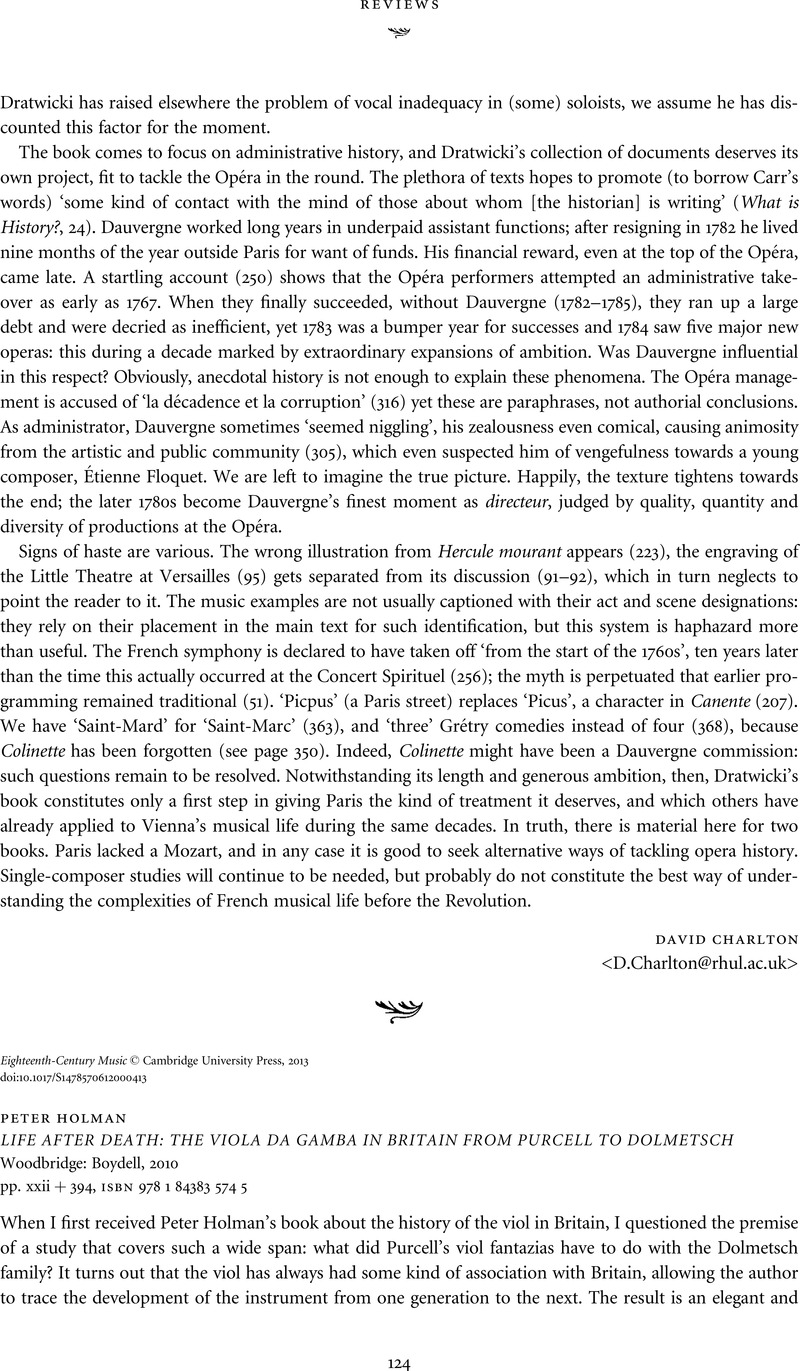No CrossRef data available.
Article contents
PETER HOLMAN LIFE AFTER DEATH: THE VIOLA DA GAMBA IN BRITAIN FROM PURCELL TO DOLMETSCHWoodbridge: Boydell, 2010pp. xxii+394, isbn978 1 84383 574 5
Published online by Cambridge University Press: 06 February 2013
Abstract
An abstract is not available for this content so a preview has been provided. Please use the Get access link above for information on how to access this content.

- Type
- Reviews: Books
- Information
- Copyright
- Copyright © Cambridge University Press 2013


